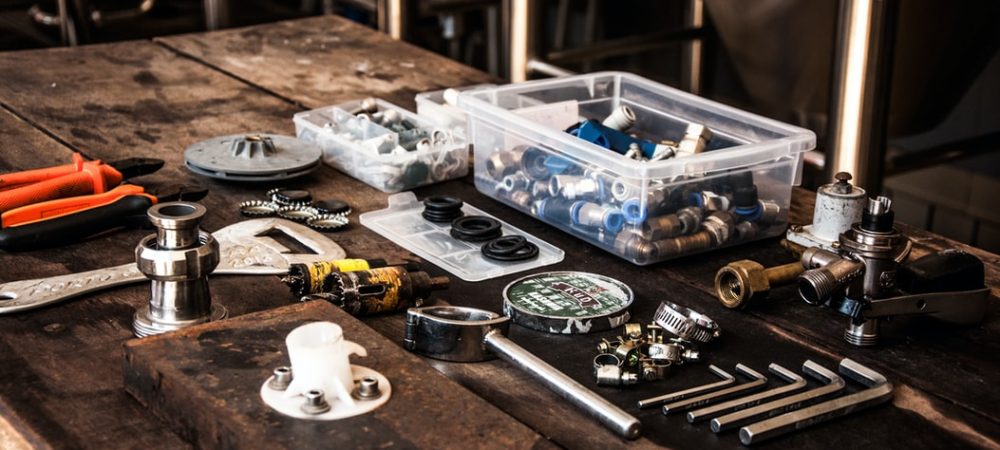
Every plumber needs the best plumbing tools he can get his hands on. Top plumbing tools not only are a good investment that will save you money in the long run, but they also help you do a better job.
This article is going to provide you with a list for the top plumbing tools for plumbers. Along the way you’ll find out what are the essential, specialty and overall best tools a plumber can use in his day-to-day work life.
We’ve broken up the tools into 9 big categories, so feel free to jump around through all the different plumber tool categories:
- Plungers
- Pliers
- Wrenches
- Saw and cutters
- Business software
- Safety
- Consumables
- Specialty tools
- Miscellaneous
Let’s get started with our first plumbing tools category.
1. Plungers
The classic and one of the best plumbing tools for removing blockages down the drain, plungers come in handy when you least expect them and should be a part of every plumber’s tool-set. Plungers come in three types: cup plungers, flange plungers and accordion plungers.
Cup plungers
This is the kind of plunger that people usually imagine when they think of plungers. Also known as the sink plunger, these usually only work properly on flat surfaces, as the cup needs to lay flat over the drain and create the proper vacuum to remove the clogging. If you use it for the proper surface (hopefully flat), you also get to benefit from the cup plunger’s double suction effect, also known as positive and negative pressure. Positive pressure comes about when forcing the cup down, while negative pressure is created when pulling the cup upwards.
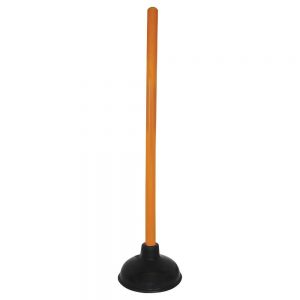
Flange plungers
Also known as the toilet plunger, this plunger differs from the cup one in that it has an extra soft rubber flap that folds out from inside the cup. This makes it a great fit for just about any type of sink, not only toilets. The advantage over the regular cup plunger is that you can even fold the flap inside the cup and use it as a regular cup plunger. Just be sure to use separate plungers for toilets and sinks, for better hygiene.
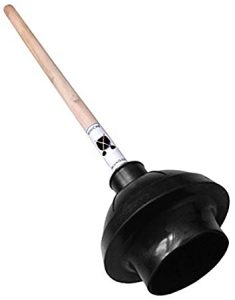
Accordion plungers
Also mainly for toilets, accordion plungers come in handy when flange plungers get you nowhere. Accordion plungers are made out of hard plastic, and they’re harder to use, but provide you with more pressure for unclogging those pesky toilets. Being made out of hard plastic, you are at an increased risk of damaging the toilet if you’re not careful (scratches are easily made).
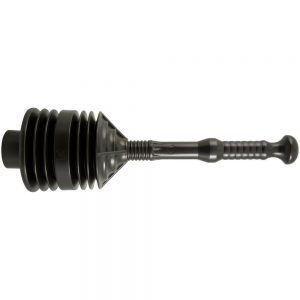
2. Pliers
A versatile set of tools that come in handy not only for plumbers but also for a variety of other professionals, pliers have time and time again proved worthy of being one of the best plumbing tools a plumber can use. The type of pliers you’re most likely to use as a plumber are the split joint pliers and the vise grip pliers.
Split joint pliers
These are pliers that have an angled head, and one handle can slide up or down to adjust the size of the grab. These are extremely useful in trying to match the exact size of a pipe without having to carry with you a ton of different wrenches of various sizes. Now plumbers can easily just carry with them a single channel lock that has an adjustable head, instead of multiple pipe wrenches. This type is one of the best plumbing pliers that you’ll going to use going forward.
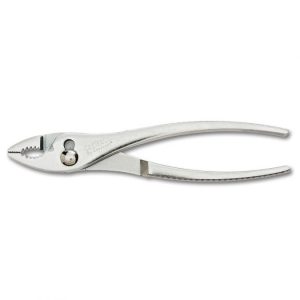
Vise grip pliers
Also known as mole grip pliers, these are a useful cross between clamps and pliers, these are able to easily hold on to items that are not supposed to be held with ease (such as a pipe). The great part is that vise grip pliers provide you with a locking mechanism (like a clamp) that holds the item in place for you. A useful and one of the best plumber tools out there.
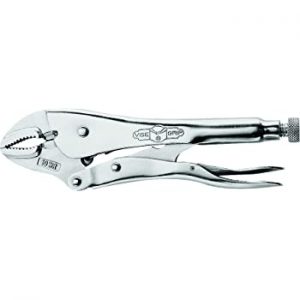
3. Wrenches
Arguably, you can’t properly do plumbing without having at least some wrenches in your tool belt. Wrenches come in all shapes and sizes, but you’ll probably use these the most: pipe wrench, basin wrench, faucet seat wrench, faucet keys and a hex key set.
Pipe wrench
The classic, adjustable pipe wrench usually has serrated teeth on its jaws, which gives it added adherence when gripping pipes and pipe fittings. A wrench that doesn’t need that big of an introduction, so make sure you add it to your plumbing tool set.
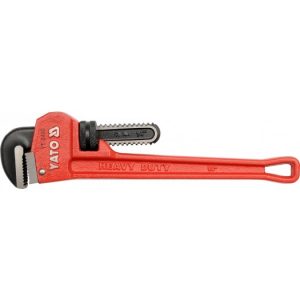
Basin wrench
The basin wrench is intended to help plumbers install kitchen and bathroom sinks. It’s designed to easily reach tight spaces thanks to its long shaft. It helps plumbers reach under a sink to loosen or tighten the mounting nuts for the sink.
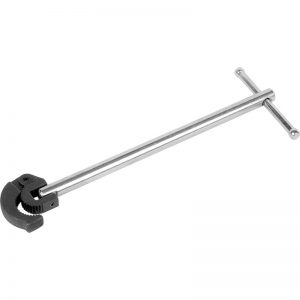
Faucet seat wrench
Faucet seat wrenches are specialty steel-made wrenches designed to help plumbers tighten or remove faucet seats. As specialty tools, they are extremely useful for this specific case but not that versatile for other cases. A good addition to your tool set nonetheless.
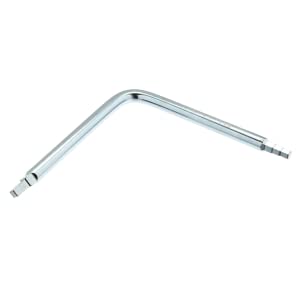
Faucet keys
Also known as sillcock keys, it’s useful not only for installing faucets but also for things such as water coolers. It’s an outdoor water spigot, hose bibb, faucet or valve that is attached to the exterior of a residential, commercial or industrial building.
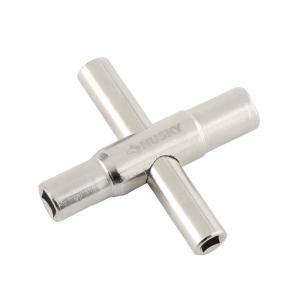
Hex keys
Also known as Allen keys, these especially come in handy when installing faucets or setting up shower valves. Unsurprisingly, you might come across different hex screws that need a proper turning, and not having available a hex key set can prove to be a major annoyance.
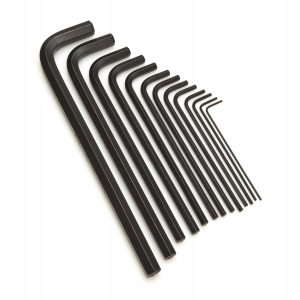
3. Saw and cutters
As a plumber, you will have to cut and shape and tubing and pipes more often than you’d like to. That’s the moment when having the proper plumbing tool for the job can make the difference between a successful and masterly-done pipe work and disappointment. Check out these saw and cutters are one of the best plumbing tools we suggest you add to your tool-set.
Hacksaw
A fine-teeth saw, the hacksaw is mainly designed to go through metal. It also works great against plastic pipe and plastic conduit, so make sure you add it to your plumbing tools.
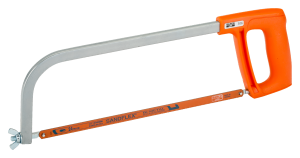
Junior hacksaw
The smaller brother of the regular hacksaw, the junior hacksaw has a smaller frame that can let you operate in those hard to reach places, making it a fine addition to your tool-set.
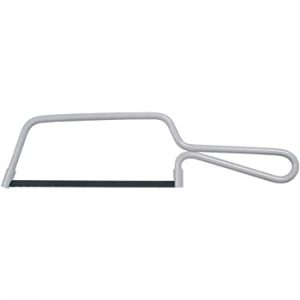
Hole saw kit
Sometimes you’ll have to run your piping through plaster boards, plastic, metal and wooden studs. To make a professional incision in materials like these, it’s best to have at hand a hole saw kit. You get the hole saw out, attach it to a drill and then you’re good to go.
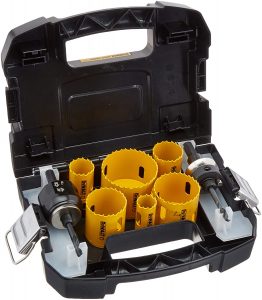
Tube and plastic pipe cutters
As the name implies, tube and plastic pipe cutters are tools used for cutting pipes. The advantage of using a pipe cutter instead of a hacksaw is that it’s cleaner, faster and neater than the hacksaw. Although you might find yourself at times in situations where your pipe cutters are not the proper size for a larger pipe, times in which a hacksaw is still the best plumber tool to use.
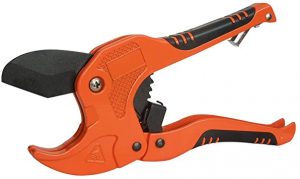
Pipe and tube benders
Being in a situation where you have to bend a pipe or a tube without having at hand a pipe bender can prove to be a real pain. You’ll probably have to hassle with figuring out what to use to clamp down the pipe, what item or material to use against the pipe to bend it, and other inconveniences. That’s why a pipe bender is a must for your plumbing tools.
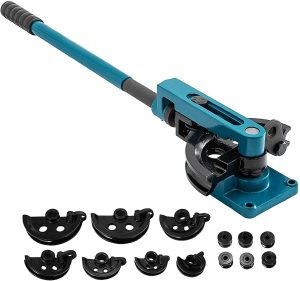
Metal file
Files come in handy when smoothing out the rough edges of a freshly cut pipe with a hacksaw. If you don’t usually hacksaw your pipes, then you can forget about having a metal file in your plumbing tools, but you never know when you need one, and since it doesn’t take up that much space, we recommend you add it to your tool-set.
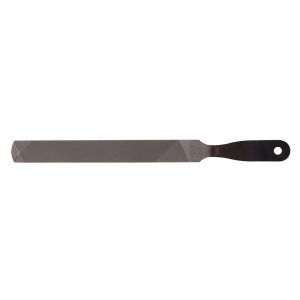
4. Business app
No best plumbing tools list would be complete without a business app. As a professional, you’ll have to deal with the hassle of keeping track of your clients, your jobs and maybe even your team. Having a good business app that helps you manage all of this can pay dividends in the long run.
FieldVibe is your one-stop solution and the best scheduling app for plumbers. FieldVibe let’s you schedule and manage all your jobs, send text message reminders to clients, clock in and clock-out so that you know how much you’ve worked and manage all your clients and schedule.
Be sure to give FieldVibe a go as it might prove to be the right app to manage your plumbing business!
5. Safety
Safety should be the number 1 priority for all field service professionals, not just plumbers. The best plumbing tools out there always need to include safety items. In this section, we will go over the main safety items you should add to your plumbing tools.
Goggles
Goggles are a blessing to a plumber’s eyesight, as debris can jump in your eye while cutting pipes, soldering pipes, inspecting leaks and even using the hole saw kit.
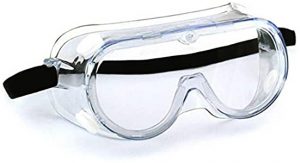
Gloves
Gloves will give you a better grip on pipes and also protect you from possible cuts and bruises. It’s a good thing for the long run to invest in a reliable pair of gloves.
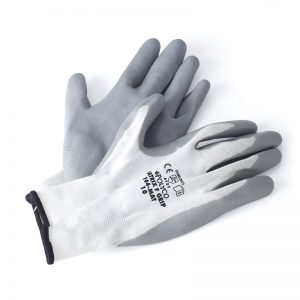
Knee pads
Plumbers spend a lot of time on their knees, reaching under sinks and faucets. Over time, this stress on the knees adds up significantly and can cause serious damage to your knee caps. Knee pads are an invaluable addition to your plumbing tools and overall health as a professional worker. Unfortunately, they are one of the top plumbing tools that get ignored by plumbers, to their detriment.
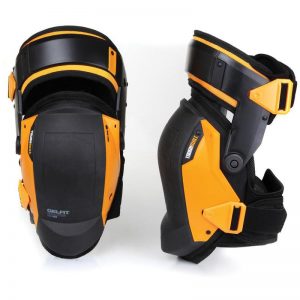
Heat shields
There are times when plumbers need to solder a few things, such as loose pipes. Heat shields are designed to protect the homeowner’s property from damage, as solder can easily drip and damage things such as the property floor.
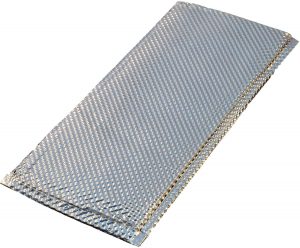
6. Consumables
A plumber’s tools doesn’t include only durable items such as wrenches and pipes, but also consumables, that need to be re-stocked from time to time. In this section we’ll go over the main consumables that a plumber should have available in his plumbing tools.
Plumber’s tape
Also called Teflon tape, Plumber’s tape is used to seal pipe joints watertight. Not only this, but it also helps disassembling the pipes easier by preventing them to stick to each other, and it’s a great addition to the best plumbing tools you can use.
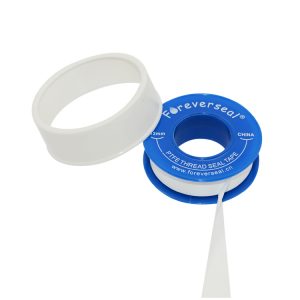
Soldering wire
As a plumber you’ll have to break out your soldering iron from time to time, and you need to have good soldering wire for it. Don’t forget to always stack up on soldering wire.
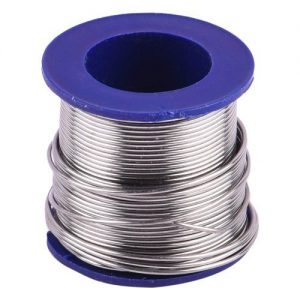
Soldering paste
Also known as flux, soldering paste is an acidic, water-soluble paste that get’s applied especially to copper pipes. Soldering paste is needed when two joints are soldered together. After the pipe is headed with a blow torch by the plumber, the soldering paste will draw in the solder filling the gap and creating a semi-permanent bond between the two pieces.
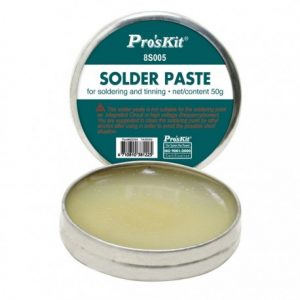
Sand paper
Abrasives such as sand paper are useful for smoothing out the rough edges of freshly cut pipes. It can also come in handy for a variety of other jobs, and you never know when you’ll need some.
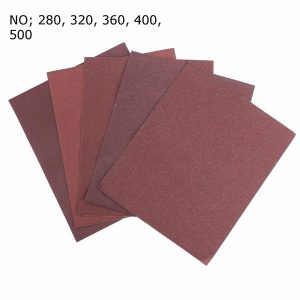
Washers and O-rings
As the saying goes, you can’t have enough washers and o-rings, so make sure you stack up on them. It’s best to figure out what sizes you use most and stack up more on those, but be sure to cover different sizes.
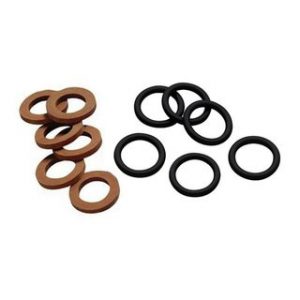
7. Specialty tools
Soldering iron
Of course, you can’t solder anything without a good soldering iron, so make sure you add it to your plumbing tools.
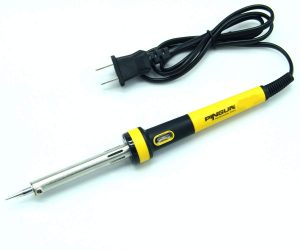
Plumber’s snakes and augers
Snakes and augers come in handy when plungers don’t manage to get the job done, you break out the big guns – snakes and augers, a plumber’s best friends and are considered to be one of the best drain cleaning tool by amateurs and professionals alike. Speaking of amateurs, one of the best drain auger for home use and overall best auger for toilet is the RIGID 59787.
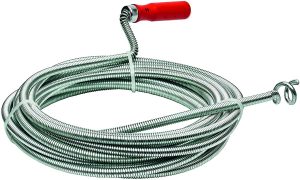
Plumber’s torch
Generally you could use pretty much any general-purpose blowtorch for your plumbing work, but you should go after something that packs enough of a punch in a small form-factor, so that it doesn’t take that much space in your tool-set. Also, a good torch that’s intended for plumbers can be one of the best plumbing tools you can add to your repository.
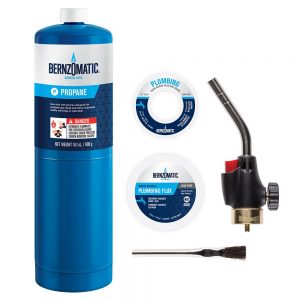
Borescope
A borescope is an optical unit that has a flexible or rigid tube that has a display or an eyepiece on one end and a camera or objective at the other. It’s extremely useful for troubleshooting bad tubing and piping, and is one of the best sewer cameras out there.
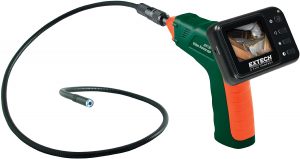
Metal detector
The best way to detect underground pipes is to use a handy metal detector. Identifying copper and cast iron underground piping has never been easier. Plus, it’s one of the coolest plumbing tools out there, and always fun to use.
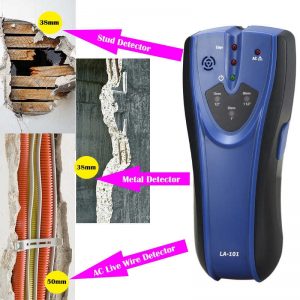
Hydro jetting machine
When dealing with sewer pipes, nothing gets the job done better than a hydro jetting machine. With a pressure of up to 241 bar (3,500 psi), a hydro jetting machine can easily scour streams of high-pressure water that go through any debris stuck in a sewer pipe.
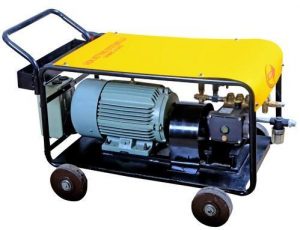
Flex shaft
Also used for sewer pipes, a flex shaft is a nested group of precisely defined springs tightly wound up so they have torsional or rotational strength as opposed to standard tensile strength found in regular cables. The best part about it is that it can bend and rotate – so that it can be routed over obstacles that can be extremely hard to do with a regular solid shaft.
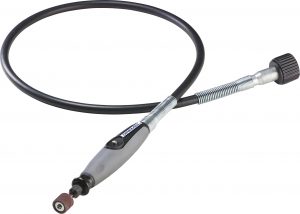
Pipe deburrer
Also known as a pipe reamer, the pipe deburrer is a conical tool for beveling or removing burrs from pipe ends. Even though it isn’t something you might use on a daily basis, it makes our list on the best plumbing tools out there as it can make the difference between bad and good piping work.
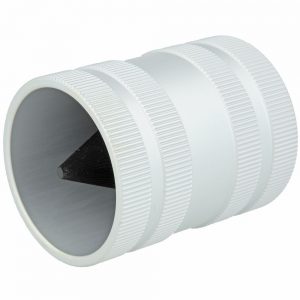
Ratchet pipe threader
There are times when you’ll have to thread or even re-thread a pipe to make it screw-in properly. A ratchet pipe threader is a small kit that’s always handy for the job and a good asset for your plumbing tools.
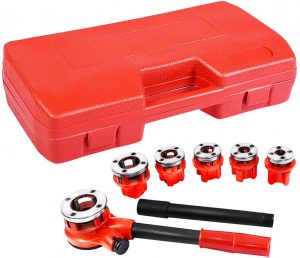
8. Miscellaneous
Bucket
Buckets are one of the most useful items a plumber can use, especially when leaks and small floods are involved in a job. No special version needed.
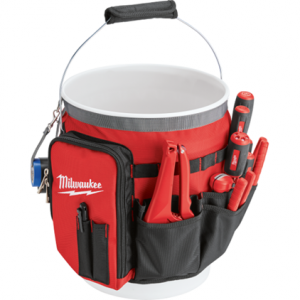
Flashlight / headlight
Working in environments with low light such as basements can prove a bit tricky, especially without a flashlight. Headlights are more handy (no pun intended) because they leave your hands free to work with.
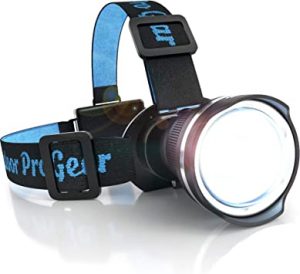
We hope that this best plumbing tools list has been comprehensive enough to give you an idea on the best tools a plumber can get and use in his day-to-day work. Keep in mind that the best plumbing tools to have are not the ones that cost the most, but those that get the job done.
Plumbers also read:
